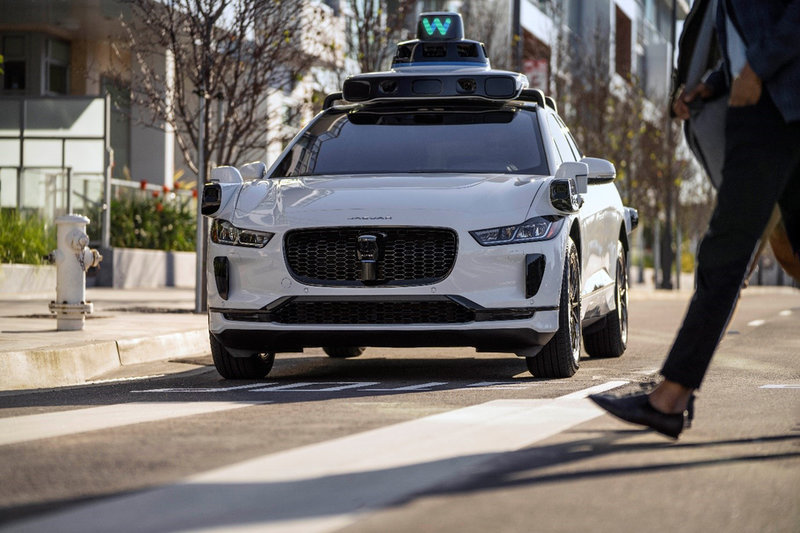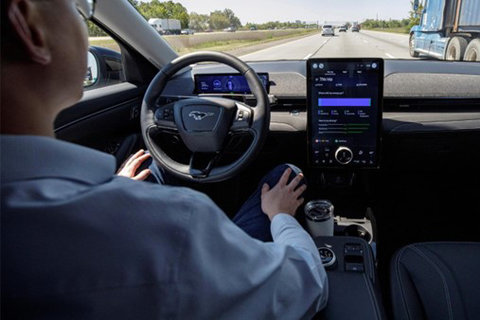Comment
Did carmakers underestimate the difficulty of autonomous driving?
Industry experts give their thoughts on recent suggestions that autonomous driving may be harder to achieve than first expected. Stu Roberts writes.

Credit: Waymo
Research by the US’ Insurance Institute for Highway Safety (IIHS) has found that carmakers have “work to do” on partial driving automation systems, let alone on fully autonomous driving, begging the question of just how realistic the latter is in the short term.
As part of a new ratings programme the IIHS is introducing with the aim of encouraging automakers to incorporate more robust safeguards into their automation systems, an initial 14 systems were tested. Of them, only one was given an acceptable rating, while two were rated marginal and 11 were rated poor.
IIHS president David Harkey said of the systems tested: “Most of them don’t include adequate measures to prevent misuse and keep drivers from losing focus on what’s happening on the road.”
The results make dubious reading for a market that GlobalData’s Automotive ADAS and Autonomous Vehicles Market report estimates to have comprised 516.3 million units in 2023 and predicts will grow at a compound rate of over 6% between 2023 and 2028.
They are also a far cry from the fully autonomous future espoused to consumers by carmakers in recent years – and by Tesla in particular for a decade. Indeed, the Tesla Model 3, which was one of the cars tested, received at least one poor rating for its partial automation systems.
However, the IIHS study is not the only recent indication that fully autonomous driving might take longer to achieve than first thought. General Motors’ Cruise self-driving subsidiary laid off 900 staff in December after its cars were pulled off the roads due to safety concerns, and it was reported at the end of February that Apple had scrapped its much-anticipated car project, of which full autonomy was thought to have been targeted as a central aspect.
The problem, according to Dr. Ilja Radusch, head of the Daimler Center for Automotive IT Innovations at TU Berlin, is that the challenge of fully autonomous driving was underestimated. He said off the back of the Cruise issues in February: “It’s disheartening to realise that we still have to factor in the supposedly remotely or barely possible, and that entails a lot more work.”
Just how much work is required is the question Just Auto put to experts from within the industry.
Sammy Chan, manager for automotive sales forecasts, GlobalData (business intelligence)
Several carmakers and other ventures have wound down or scaled back autonomous driving investment in recent years, likely due to initially underestimating the difficulty and timescale required to reach fully autonomous capabilities.
Ford and Volkswagen invested in Argo.AI to target level 4 capabilities, but the carmakers backed away from this joint venture in 2022 to focus on level 2 and 3 offerings instead. The companies found that development costs spiralled, and commercial returns would still be too distant to make it worthwhile pursuing level 4 at that time.
Other difficulties include the regulatory environment and public trust that companies must navigate. Amassing driverless miles for data is important for companies in the quest for fully autonomous driving. However, even leaders in this space encounter severe setbacks. Cruise is on a long road back to reclaiming its driverless car permit in California after an incident in October 2023 involved a Cruise vehicle hitting a pedestrian.
Dave Kelly, chief corporate officer, Cubic (connected vehicle software)
This latest study adds to a growing amount of evidence showing that automotive OEMs are struggling to grapple with the strict standards when it comes to driver safety. OEMs have been heavily focussed on improving the in-car driver experience through improvements in underlying connectivity, local content and streamlined user interfaces. These features will come to their own with the increased proliferation of autonomous driving, but a key driver of the autonomous vehicle market is the promise of a safer journey for drivers, passengers and pedestrians. Regulators are struggling to see these two things as happy bedfellows and are introducing new rules to stop motorists from becoming dangerously distracted.
For example, from July 2024, the EU will mandate that all new vehicles be installed with driver drowsiness and attention warning systems. These systems will identify driving and/or steering patterns that suggest a driver is experiencing reduced alertness or attention to the road. This mandate will help ensure drivers using partial driving automation systems keep their focus on the road.
For automakers looking to deliver software-defined connected services to achieve levels 4 and 5 vehicle autonomy, it’s important that they marry the rollout of self-driving car technology with these regulatory developments from policymakers, which is proving to be a complicated hurdle in the pursuit of making autonomous vehicles mainstream and commercially viable.
Kia Cammaerts, technical director, Ansible Motion (driving simulators)
Having a safe, repeatable and cost-effective way of capturing and analysing human behaviour is leading more OEMs to wholly embrace driver-in-the-loop simulation for advanced driver-assistance system (ADAS) validation and testing.
At first glance, autonomous systems might appear to render human drivers superfluous for developing a new vehicle. In fact, none of these vehicles will operate on their own and their behaviour has to be safe, comfortable and confidence-inspiring for their human occupants. Factor in rises in connectivity, electrification and the list of scenarios where you also need the input of a human driver, and it’s estimated it could take thousands of years to validate nearly every potential scenario.

Credit: BlueCruise
To determine how they will corrupt or enhance driving pleasure, OEMs and tier-one vendors (direct suppliers to OEMs) need to understand how a human will interact with ADAS intervention. Does the vehicle’s behaviour instil confidence? Is it comfortable? Does it convey the brand’s essence? We believe you can find answers to these questions faster using a real person in an engineering-class driver in the loop simulator.
Dennis Marcus, Commercial Manager, Cruden (driving simulators)
One of the problems, that we have seen from the less-than-successful introduction of certain ADAS on the market in current vehicles is that these systems are not being accepted by drivers. Developed and tested by and with engineers, not real people, not using driving simulators.
But now some manufacturers have developed simulator test centres, such as that launched by BMW in Munich and planned by Porsche, whereby hundreds of members of the public are being invited to the development process to test different automotive systems.
This type of simulator test centre will undoubtedly result in better cars. OEMs need to know what people like. Fewer mistakes will be made in developing systems, particularly human-machine interface strategies, that we see turn out to be unacceptable to customers when insufficiently tested. For example, we have also noted the recent shift back from all-touch screens to buttons in cars. More widespread use of simulators, using real people, will reveal human preferences.
John Ellmore, editor, Electric Car Guide (media outlet)
Given the latest findings by the Insurance Institute for Highway Safety (IIHS) revealing that the first batch of partial driving automation systems fall short in terms of safety safeguards, carmakers may have underestimated the complexity and challenges associated with autonomous driving.
The assessment shows that the industry has significant room for improvement in ensuring these systems can operate safely. There is a real balance between advancing technology and guaranteeing public safety on the roads, and a need for continued innovation and rigorous testing before fully autonomous vehicles can become a common sight.
Richard Lawton, head of marketing and communications, DriveElectric (EV leasing and charging)
At DriveElectric, we don’t believe there’s been an underestimation of how complex developing hardware and software systems is when it comes to autonomous driving. While the development path hasn’t been linear, there’s been great progress in making cars significantly safer year by year, model generation by model generation.
The technology and computing power of the latest electric cars could only have been dreamed about five years ago. There’s no question carmakers still have hurdles to overcome but with the coming of ever more advanced AI platforms now being deployed to assist in developing autonomous driving models, the first fully autonomous vehicles are likely to be not too far away.